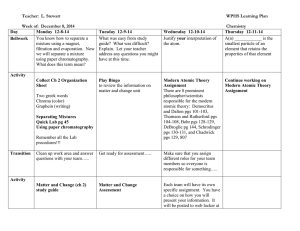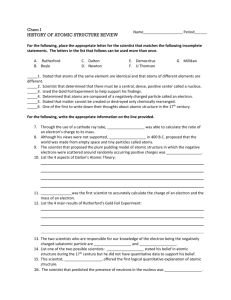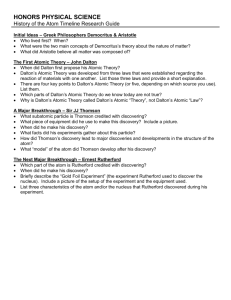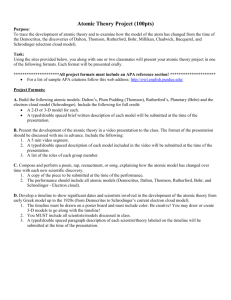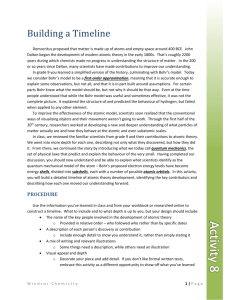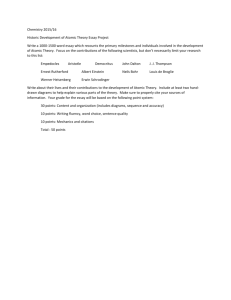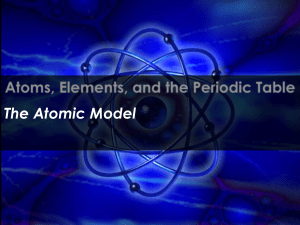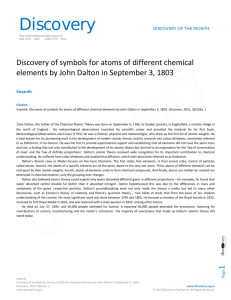1.3 evolution of atomic theory
advertisement
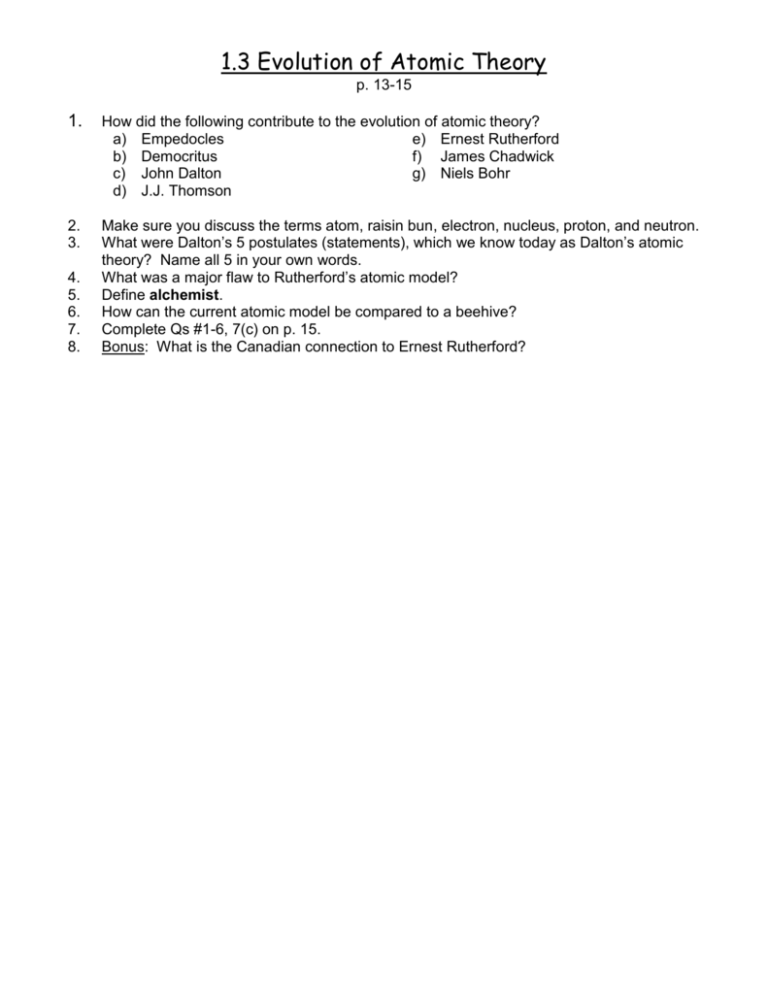
1.3 Evolution of Atomic Theory p. 13-15 1. How did the following contribute to the evolution of atomic theory? a) Empedocles e) Ernest Rutherford b) Democritus f) James Chadwick c) John Dalton g) Niels Bohr d) J.J. Thomson 2. 3. Make sure you discuss the terms atom, raisin bun, electron, nucleus, proton, and neutron. What were Dalton’s 5 postulates (statements), which we know today as Dalton’s atomic theory? Name all 5 in your own words. What was a major flaw to Rutherford’s atomic model? Define alchemist. How can the current atomic model be compared to a beehive? Complete Qs #1-6, 7(c) on p. 15. Bonus: What is the Canadian connection to Ernest Rutherford? 4. 5. 6. 7. 8. 1.3 Evolution of Atomic Theory About 450 BC, a Greek scholar named Empedocles proposed that matter was composed of 4 elements: earth, wind, fire, & water About 50 years later, another Greek scholar named Democritus suggested matter was made of small, indivisible particles called atomos (aka atoms) For the next 2000 years, Socrates, a combination philosopher, mystic, magician, and chemist tinkered with but never expanded on atomic theories In 1808, English chemist John Dalton experimented with gases & liquids and lead him to make 4 proposals (called postulates), known today as Dalton’s Atomic Theory: i. ii. iii. iv. All matter is made of tiny, indivisible particles called atoms, which cannot be created or destroyed All atoms of a given element are identical in all ways (properties) Compounds are formed when atoms of different elements link together A chemical reaction is simply a rearrangement of atoms. In 1897, British physicist J.J. Thomson discovered a new subatomic particle that we now call the electron, and proposed a new model of the atom, called the raisin bun model (see Fig. 5.4 on p. 181). The raisins represent electrons In 1912, Danish scientist Neils Bohr and Kiwi scientist Ernest Rutherford collaborated to create a newer atomic model that had 2 components: a positive nucleus and a negative orbit (fixed path) of electrons (see p. 186) In 1934, British scientist James Chadwick performed experiments that proved the nucleus of the atom was composed of more than just a positive particle: a neutral particle too, later named the neutron Since then, the current atomic model has 1 major change to the Bohr/Rutherford model: the negative orbits have been re-termed spheres, since they occupy more space than just a single path around the nucleus often called shells



